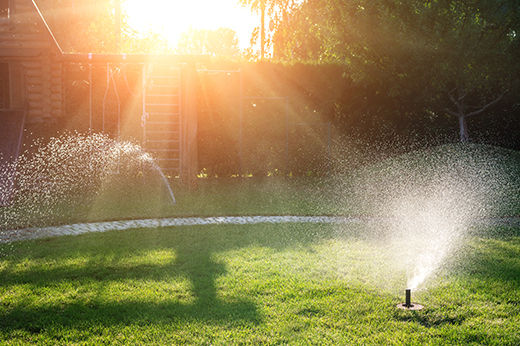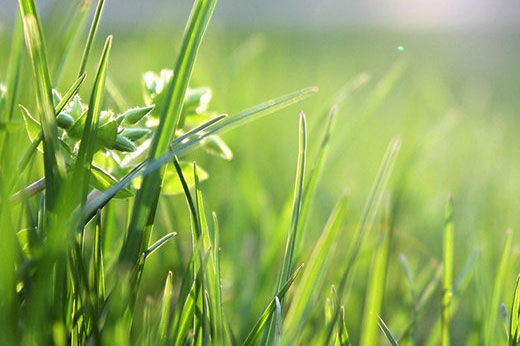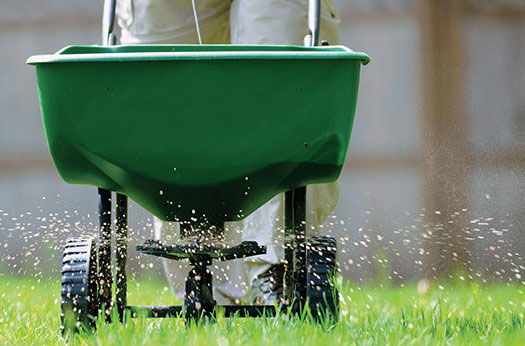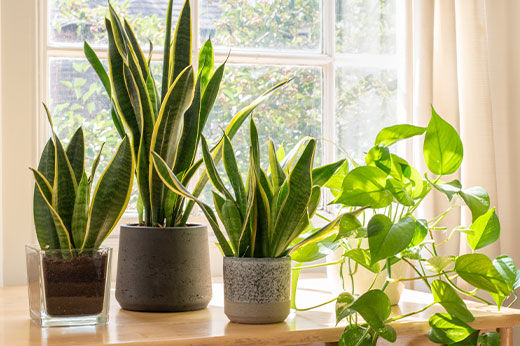While do-it-yourself projects can be fun and fulfilling, there is always a potential for personal injury or property damage. We strongly suggest that any project beyond your abilities be left to licensed professionals such as electricians, plumbers, and carpenters. Any action you take upon the information on this website is strictly at your own risk, and we assume no responsibility or liability for the contents of this article.
How to Grow and Care for Roses

Roses have an unfair reputation for being fussy and difficult to grow. While they can be challenging when the wrong variety is selected, there is a type of rose for every area that should grow well with minimal care. As long as you give your rose the right setting and some routine attention, it should thrive and reward you with many blossoms during the spring to summer.
Where and How to Plant Roses
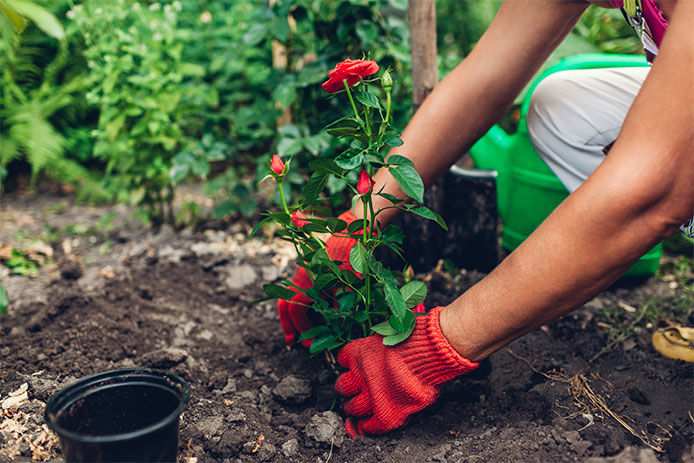
Selecting the right spot for a rose bush or hedge is the first step to success. An area that is too exposed will cause the bush to lose leaves or fail to flower, while too much protection blocks the air and light the rose needs. All rose varieties need at least six hours of full sun per day. Some may need eight hours of sun, which will be indicated on the culture notes for that variety. Morning sunlight is more important than the afternoon sun for these plants. Early sun exposure dries out dew that can lead to fungal diseases, while the afternoon sun can be too harsh. Try a spot with afternoon shade if you are located in areas with hot or dry summers to reduce the strain on the bush. Keep plants at least three feet apart or two feet for a tightly grown hedge.
The planting process depends on whether you choose a potted rose or a bare root plant. Inspect bare-root plants for damaged, darkened, or softened roots and trim them off. Soak the plant for 12 hours before planting. For a container rose, gently remove the pot right before planting and work the root ball loose with your hands. Both types of roses need a similar kind of planting hole. Dig a hole one inch larger than the root ball but at the same depth as the root ball is tall. You want to ensure that the roses’ grafts are at the right point above the soil: burying the plant too deep in a hole will only backfire. Add only a cup or so of bone meal to the planting hole and no other fertilizers. Organic materials like compost can be added at planting for soil amendment.
Selecting the Right Varieties
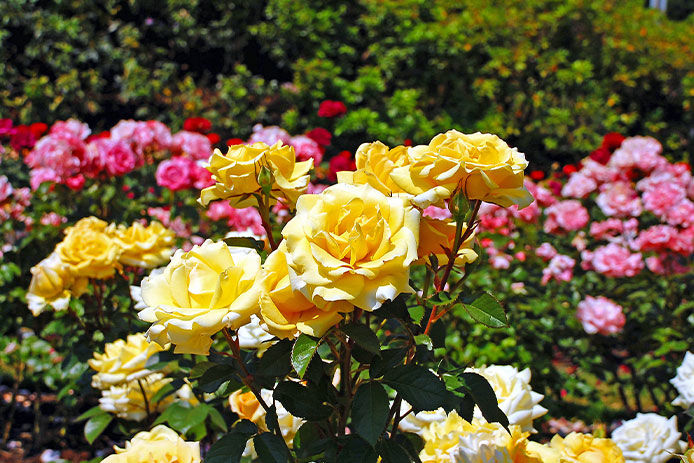
Old-fashioned roses may offer a classic look, but they’re not always the easiest to grow. Knockout and hybrid roses are modern marvels with expanded hardiness and disease resistance. Climbing roses with smaller blooms tend to be cold-hardy and easy to grow, even when you forget to fertilize or prune. Wild roses are a good choice as long as they’re native to your region because they’ll be well-adapted to your particular conditions. No matter what color or style of rose bush you prefer, you can find a variety that fits your USDA climate zone and available conditions.
How to Prune Roses
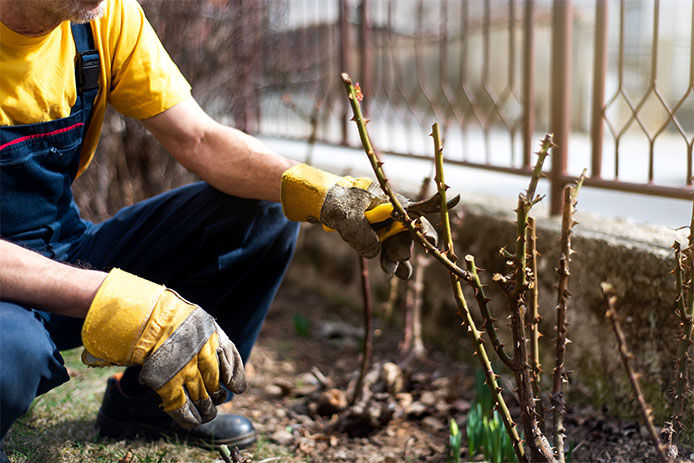
You’ll need thorn-resistant pruning gloves for this task. Look for the gauntlet style that extends up the arms for better protection while working on the bush. Make sure you purchase bypass pruning shears. The thin yet tough canes of rose bushes tend to become crushed or cut at the wrong angle when using the anvil-style shears. Handle all pruning while the plant is just breaking out of dormancy after the last hard frost and before most of the leaf buds begin to open. That time frame can range from January to May, depending on the climate zone.
Trim off any old foliage, rosehips, and dead material. Next, trim down branches that rub or touch each other to discourage damage. Remove the majority of stems and branches inside the center of the bush so that there’s better air circulation and foliage growth. Anything thinner than a pencil should be trimmed off to encourage thicker growth. Finally, trim all the remaining growth so that it’s only 18 to 24 inches tall. Make sure there’s are least one good bud knot that faces outward on each cane you leave behind. Heavy pruning leads to larger flowers, so don’t be stingy.
Rose Fertilizer Suggestions
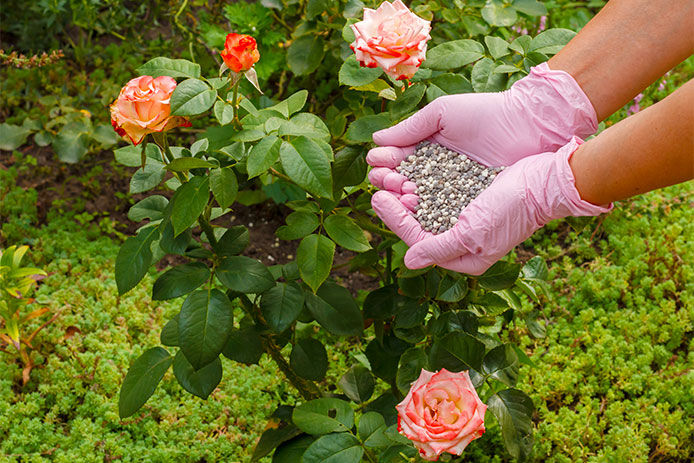
Roses need fertilizer before they begin leafing out and throughout the flowering season. As the weather warms and frost ends, start applying a high-nitrogen fertilizer like blood meal or manure around the base of the bush. Add ¼ cup of Epsom salts diluted in two gallons of water to add magnesium. When leaves appear and buds form, continue with a balanced slow-release fertilizer as soon as new shoots reach five to six inches in length. Top up this fertilizer every month during the blooming season, then taper off with one last dose of ¼ cup Epsom salts and a fish fertilizer product at half strength.
Cross-Pollinating Roses

If you have some focus and a steady hand with a paintbrush, you can cross two different roses yourself and make a new hybrid. Of course, not all roses are compatible, but it’s worth experimenting with. When both roses have healthy blooms that are about half open, it’s time to select some of the flowers and mark them off. Remove all the petals from both sets of donor plants. Cut the flowers of the pollen donor roses off and use a small knife to scrape the pollen from the anthers of these plants. For the flowers intended to form the seeds, cut off the anthers so they can’t form pollen and self-pollinate. Wait about a day, and you should see the stigmas becoming shiny with a sticky substance. Dust the pollen you collected before on the stigma, then cover the pollinated blooms with small wax-covered envelopes to keep other pollen out. Once the rose hips form, the bags can be removed until they’re mature enough to cut off and dry for seed.
Cutting Roses for Indoor Display
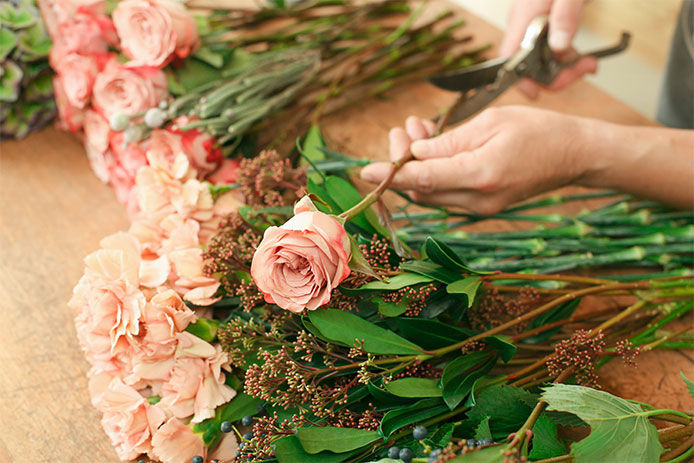
Cut the stem down to the next largest branch when cutting roses for indoor display. Trim the bottom of each stem to a 45-degree angle. That way, it absorbs water and minimizes bacterial growth. Choose roses that are just starting to open and cut early in the day, removing all foliage except the top two sets of leaves.
Try roses in different colors, formats, and fragrances to build your skills with this classic garden plant. Pruning practice and attention to fertilizing will go a long way in keeping your roses blooming year after year.
